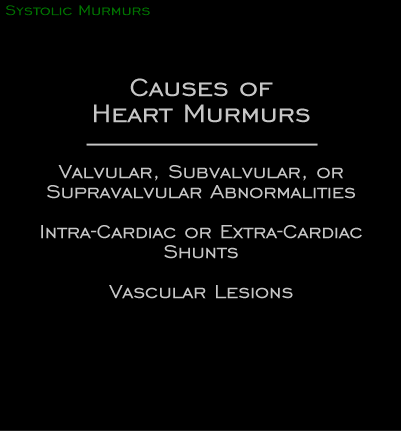
Cardiac murmurs, be they systolic, diastolic or continuous, may be attributed to valvular, subvalvular or supravalvular abnormalities, to intra-catrdiac or extra-cardiac shunts and/or to vascular lesions such as stenosis or fistulae. They are distinguished by their characteristics, such as location and radiation, by the associated changes in the electrocardiogram and by abnormalities in any of several imaging modalities, such as x- ray, cardiac ultrasound (echocardiography), or nuclear magnetic resonance (NMR). The correlation of the patient’s history with these findings permits the correct diagnosis of the responsible lesions(s) and an assessment of their hemodynamic consequences.
